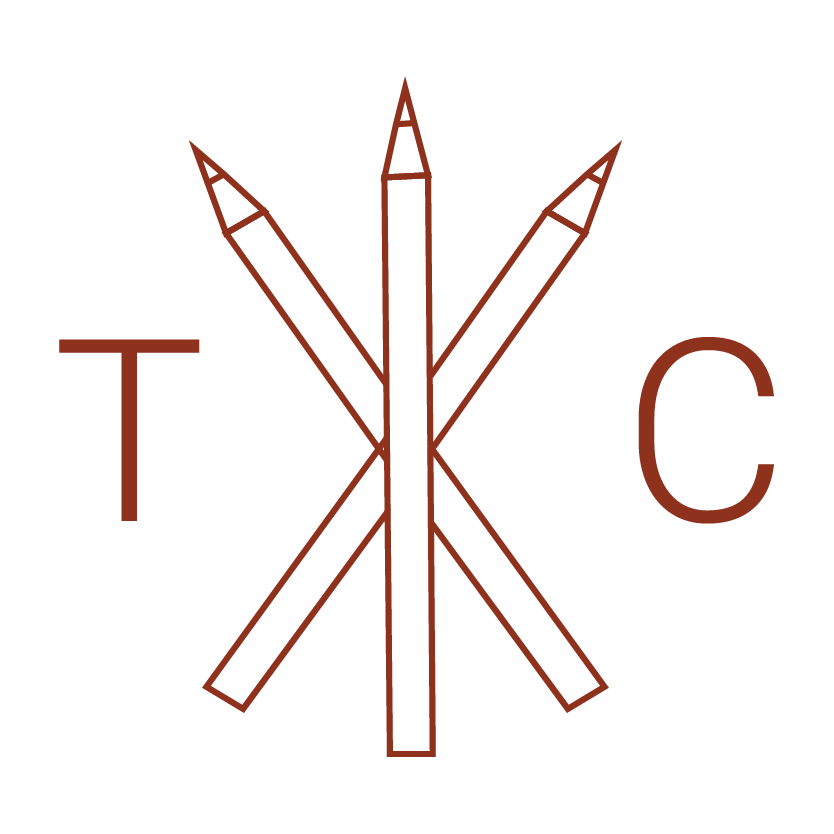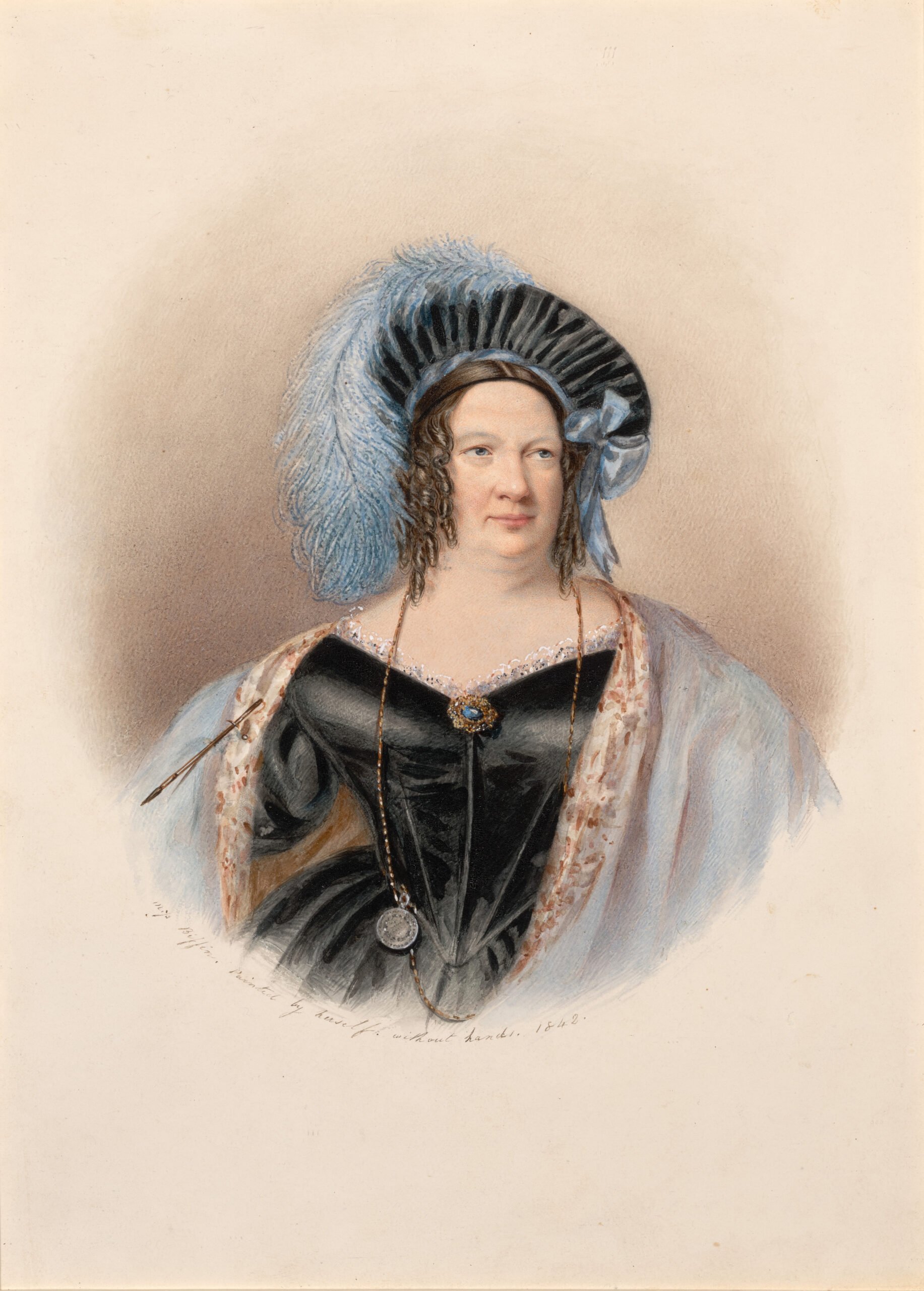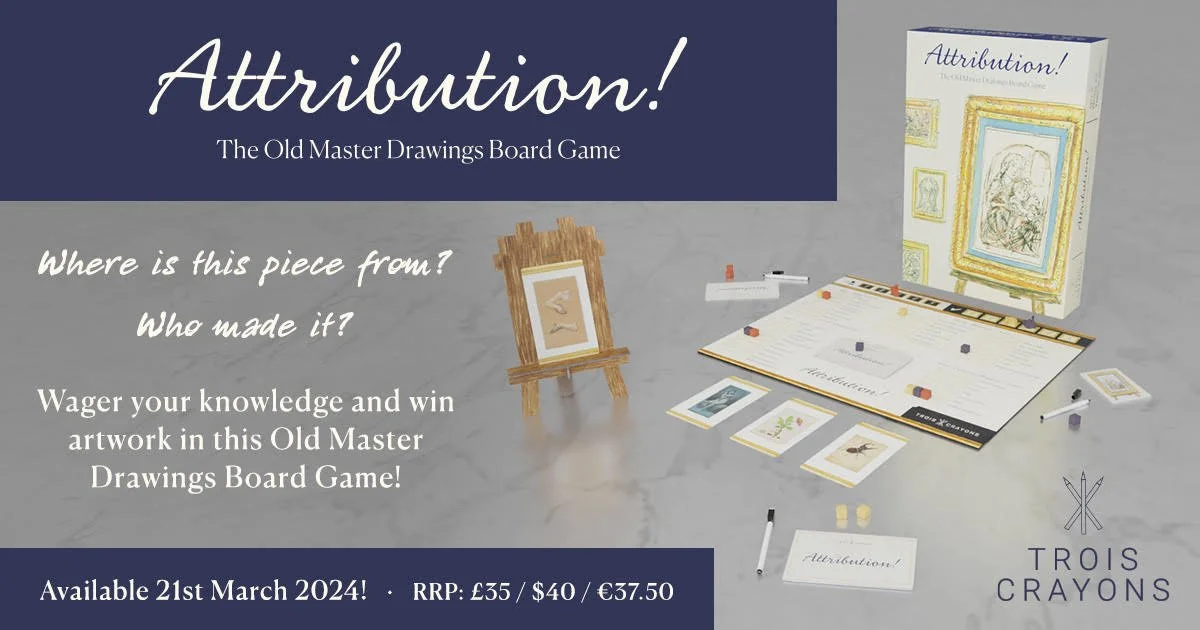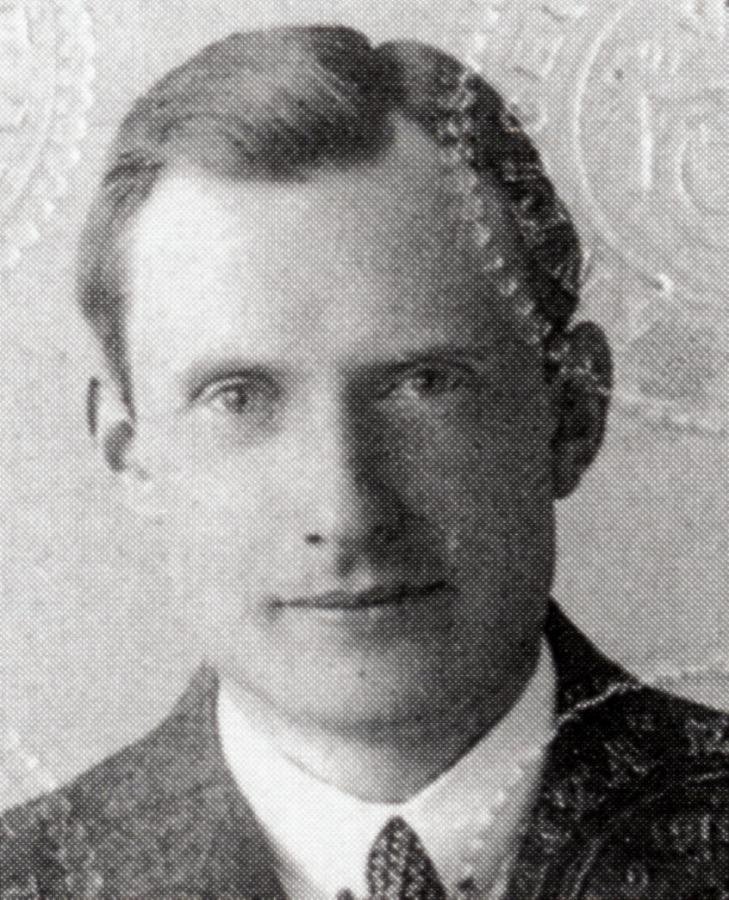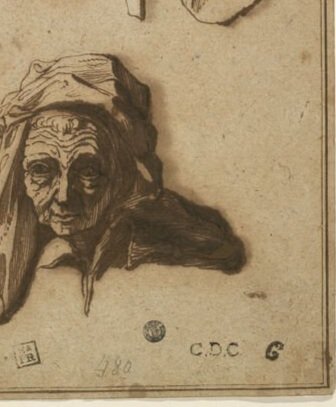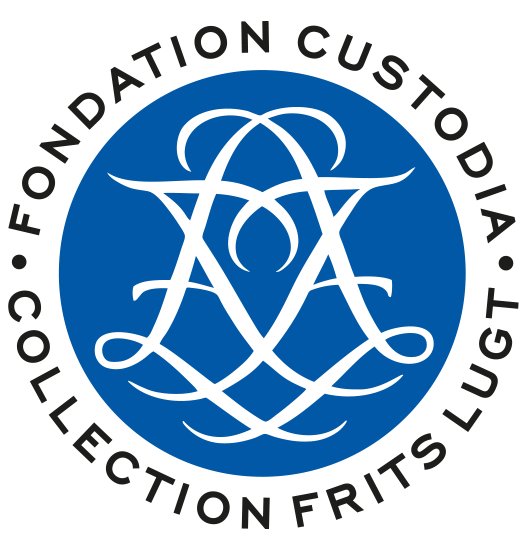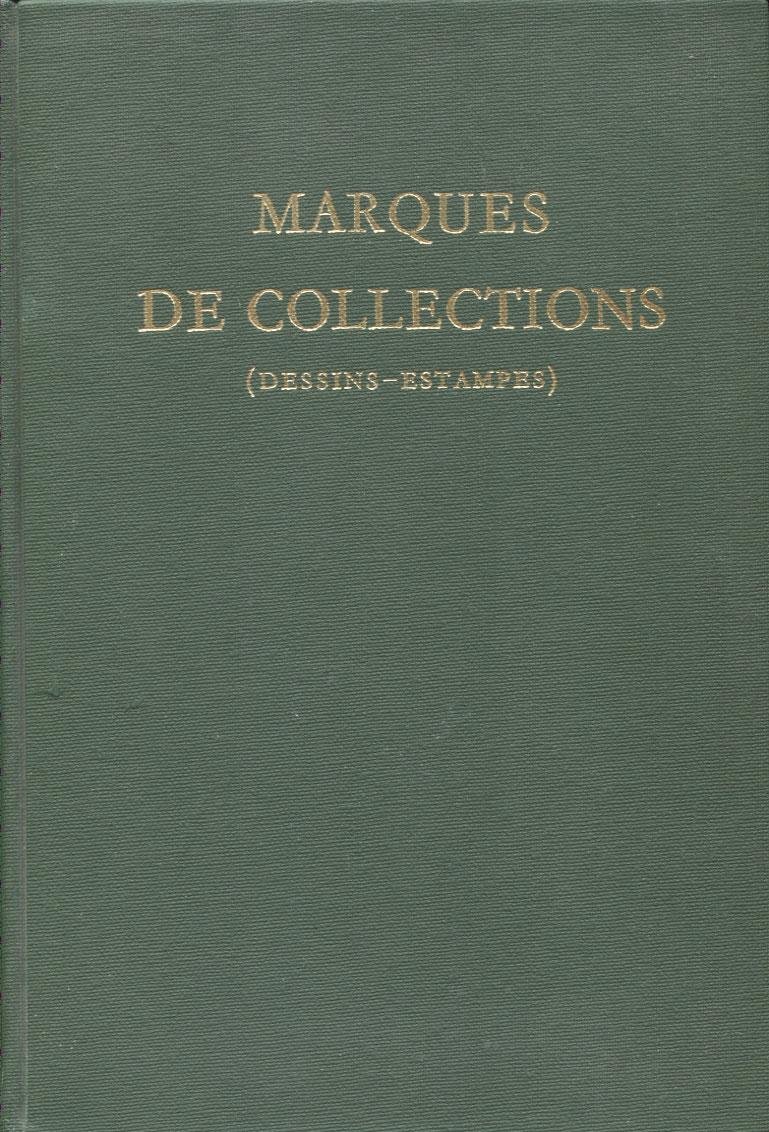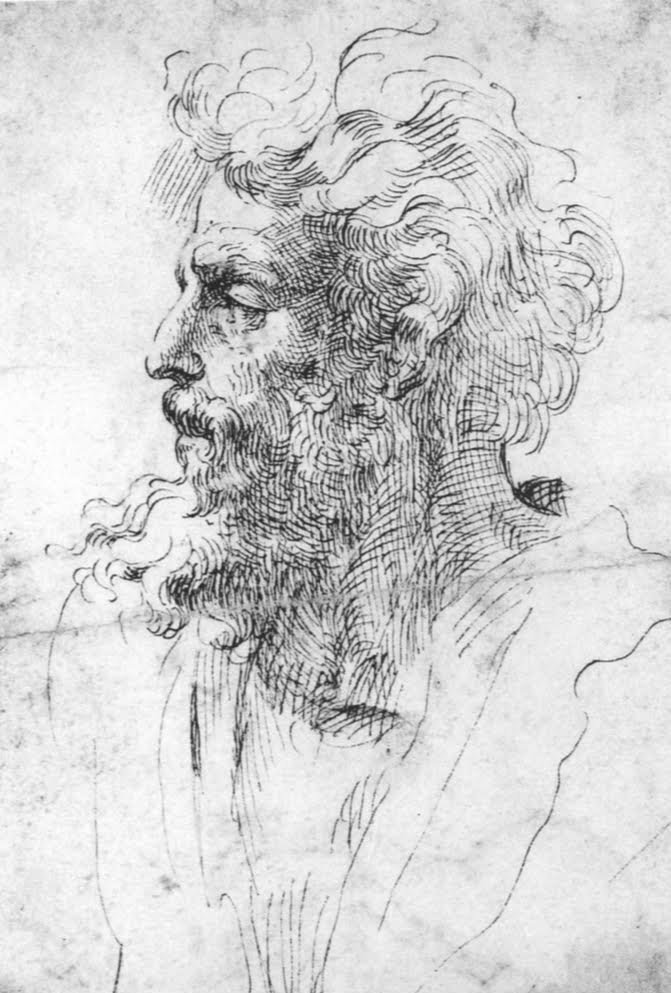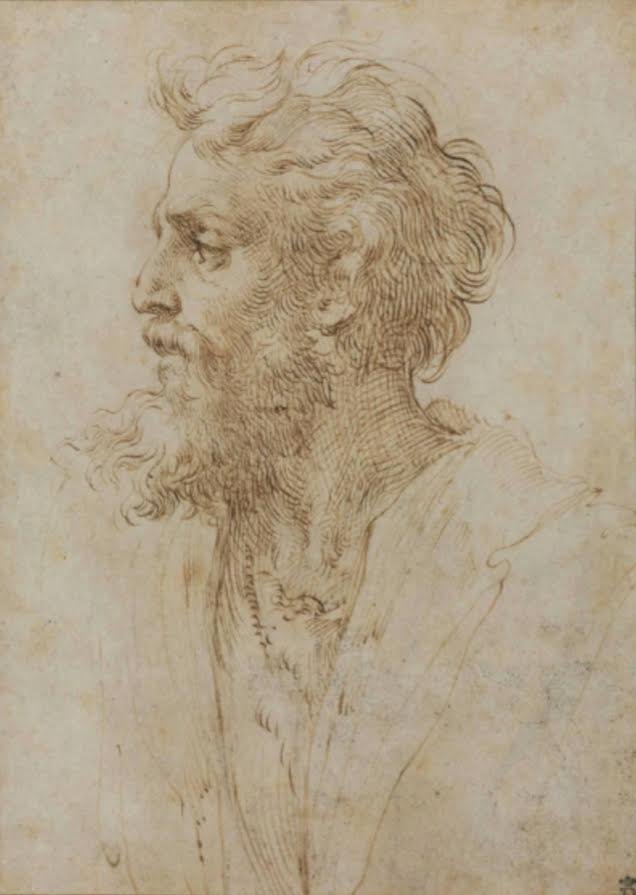April 2024
MONDAY, APRIL 1
Trois Crayons (French, "three crayons") The technique of drawing with black, white and red chalks (à trois crayons) on a paper of middle tone, for example mid-blue or buff. It was particularly popular in early and mid-18th century France with artists such as Antoine Watteau and François Boucher. (Clarke, The Concise Oxford Dictionary of Art Terms)
Coming Up
Dear all,
Greetings from Trois Crayons HQ and a happy Easter to all. I hope that readers have had a restful pause after a busy month of exhibition openings, academic conferences, art fairs and auctions for the drawings community.
First and foremost, we’d like to extend our thanks to all those who came to the launch of our board game, Attribution!, at Nicolas Schwed’s gallery in Paris the week before last. We were thrilled at the game’s reception and extremely grateful to Nicolas for being such an accommodating host. For those who could not make it, fear not, the game is available now to order online, and a full run-down of the event and the rules are provided in the ‘Review’ section below.
For this month’s edition of the newsletter, we have picked out 10 events from across the UK and around the world, spoken with Andaleeb Badiee Banta of the Baltimore Museum of Art about a favourite drawing by Sarah Biffin, discussed collectors’ marks with Rhea Sylvia Blok of the Fondation Custodia, and recommended a selection of literary and audio highlights. As ever, you can test your inner connoisseur with our real or fake section.
NEWS
In drawings news, the Fondation Custodia has published its own newsletter, with reflections on Ger Luijten, the appointment of Stijn Alsteens, recent acquisitions and news of an upcoming exhibition, ‘Un œil passionné. Douze ans d’acquisitions de Ger Luijten’, which will open on the rue de Lille on the 27th of April. 2024 marks the 150th anniversary of the first impressionist exhibition in Paris and to honour the anniversary, the Musée d’Orsay has recently opened the exhibition ‘Paris 1874. Inventing Impressionism’. Drawings lovers will be pleased to know that the show is accompanied by a special display of drawings dated to 1874. Paris has been a hub of activity recently and in the salerooms, three drawings in particular seemed to catch viewers’ attention. Firstly, at Christie’s an unpublished drawing by Jacques Bellange was pre-empted by the Louvre, who also pre-empted an impressive sheet by Jean Cousin the younger at Ader Normann [correction: pre-emption of Jean Cousin drawing to be confirmed]. A third eye-catching drawing by Hans Jakob Oeri, also at Christie’s, was won in the room by Stephen Ongpin.
In other news, in New York, our partner organisation, The Drawing Foundation, has announced an all-day drawing competition, on Sunday, April 7th, in New York, bridging of the gap between historic and contemporary practices. Also in New York this past month, a rare American Revolution drawing, now one of only two artworks to feature female revolutionaries, was found hanging in an apartment. Another reminder for readers to check their attics. In Chicago, a large collection of Dutch and Flemish Mannerist prints has been acquired by the Art Institute of Chicago. Jamie Gabbarelli, the Prince Trust Associate Curator of Prints and Drawings, has written about the purchase and some of its highlights on the CODART website. In Switzerland, Art Recognition, a company which uses AI to authenticate Old Master paintings, has turned its attention to a drawing from a European private collection related to Albrecht Dürer. Long believed to be a copy of a drawing in the British Museum, “Art Recognition has determined with 82 percent certainty that a drawing purportedly by Albrecht Dürer was indeed created by the Northern Renaissance master”. Take from that what you will. The journal Delineavit et Sculpsit has issued a ‘save the date’ for their biannual symposium at the Teylers Museum for June 7 this summer.
Please direct any recommendations, feedback, event listings or news stories to tom@troiscrayons.art, they are all appreciated.
EVENTS
This month we have picked out a selection of new and previously unhighlighted events from the UK and from further afield. For a more complete overview of ongoing exhibitions and talks, please visit our Events page.
UK
Wordlwide
DRAWING OF THE MONTH
Sarah Biffin
Self-portrait, 1842
Watercolour and gouache on paper, 330 x 250 mm, Baltimore Museum of Art, 2022.199
Andaleeb Badiee Banta, Senior Curator and Department Head, Prints, Drawings & Photographs, Baltimore Museum of Art, has kindly chosen our seventh drawing of the month.
One of the most engaging works included in the exhibition Making Her Mark: A History of Women Artists of Europe, 1400-1800, co-organized by the Baltimore Museum of Art and the Art Gallery of Ontario in Toronto, is the self-portrait of the miniaturist Sarah Biffin. Rendered in Biffin’s characteristically precise style, the self-portrait dates from 1842, by which time she had become a national celebrity. Dressed in fine clothes at the height of fashion, Biffin portrays herself wearing a medal awarded to her by the Royal Society of Arts, inserting her image into a tradition established by many accomplished painters of the past. This impressive presentation belies Biffin’s working class origins as well as her physical condition, phocomelia.
Born “without arms or legs,” as described on her birth certificate, Biffin taught herself to write, sew, and paint using her mouth. When she was twenty, she agreed to become an itinerant artist, traveling with John Dukes and his family, who showcased her talents for writing and painting on-the-spot miniature portraits at fairs through the English countryside. Promoted as “The Great Genius” and “The Eighth Wonder,” Biffin’s fame eventually provided opportunities to paint portraits of nobility and royalty in England and the Netherlands. By 1821, she had a studio on The Strand in London and submitted her work to the Royal Academy of Arts. She became miniature painter to Princess Augusta Sophia in 1830, and circulated frequently between Brighton, London, Oxford, Windsor, and Bristol. By the time Biffin painted this self-portrait, she had relocated to Liverpool, where she established a studio and public gallery of her works until her death in 1850.
In addition to emphasizing her celebrated status, this self-portrait bears several hallmarks of her work. Biffin was known not only for her portraiture, but also for her feather still life miniatures. The self-portrait includes this detail in Biffin’s fabulously decorated hat. Pinned to the shoulder of her ermine-trimmed cloak, which simultaneously highlights and obscures the absence of her arms, is her miniaturist’s brush, where she would have been able to reach it with her mouth. Just below her image is her signature in which she indicates “Painted by herself without hands.” Her penchant for calling out her physical condition appears in her signed works and her advertising posters and pamphlets, suggesting that she considered her disability a point of pride and used it to promote her talents.
Biffin’s self-portrait is just one of many works in Making Her Mark by European women artists who found ways to operate outside of the mainstream pathways of education, success, and recognition from which they were systematically excluded. Bringing together over 230 examples of women’s creative production across media, regions, and centuries, “Making Her Mark” confirms that women have long been involved integrally in the development of the history of Western art. The exhibition is currently on view at the Art Gallery of Ontario in Toronto until July 1.
REVIEW
Attribution! the Trois Crayons Board Game Launch (21 March 2024)
Galerie Nicolas Schwed, Paris
The Semaine du Dessin in Paris played host to a flurry of drawings-focused conferences, exhibition openings, auctions, and pop-up shows, and in amongst this hive of activity we hosted our very own inaugural in-person event, the launch of the Trois Crayons board game, Attribution!.
It was a jovial affair, well attended by young and old, newcomers to the world of drawing and seasoned experts, who came and went between the hours of 6 and 10 at Nicolas Schwed’s premises on the rue Saint-Honoré. Well stocked with wine, macarons and an emergency order of pizza, gameplay extended well beyond the average estimated length of 30 minutes. Surrounded by a fine selection of drawings, green felt-topped Bridge tables transformed the gallery into a games hall for the evening. A fitting amount of civil disagreement over attributions and media descriptions made for a good-hearted evening and thankfully no diplomatic incidents were caused. Anglo-French relations remain intact, perhaps even improved. A la prochaine!
How to Play?
The game is designed so that connoisseurial levels of knowledge are not required for its enjoyment. As with all games, it is perhaps best explained with an in-play demonstration, but for the sake of this newsletter, I shall endeavour to provide a brief flavour of the gameplay here.
In each round an Art Card, with a drawing on the front and a description of its attributes on the reverse, is placed on an Easel. The drawing is then examined by each player who must in turn bid on the number of attributes they believe they can identify. These attributes relate to the drawing’s Type, Style, Medium, Country/Region and Artist. Players take turns starting with the player who has bid the highest amount. The boldest bidder places their bids in the corresponding attribute sections of the board using small Marker Cubes. Bidding big is a high-risk, high-reward strategy. The bidder then turns the Art Card and reads the information on the back without revealing the answers to the other players. If all the bidder’s predictions are correct, the bidder wins the Art Card for their own collection. If any of the predicted attributes were incorrect however, play passes to the next highest bidder and the first bidder’s boldness will cost them as their Marker Cubes will provide clues for the more conservative players. These players will in turn have the same chance to win the card for their own collections.
DEMYSTIFYING DRAWINGS
How To: UNDERSTAND A COLLECTOR’S MARK
To mark the recent launch of the new Marques de Collections website, our editor speaks with Rhea Sylvia Blok, conservateur at the Fondation Custodia, Paris, about collectors’ marks, their history and the changes to the database.
Marques de Collection
Collectors’ marks are integral to the understanding of a drawing’s history, but they are little known or understood outside of the sphere of drawings enthusiasts. As remarked upon at a recent event at Master Drawings New York, drawings people are bonded by a mutual understanding of subject-specific terms like ‘Lugt number’ and ‘counterproof’ and are liable to spend much of their time discussing things like ‘hands’. Thanks to Marques de Collection however, collectors’ marks need not be the domain of the specialist and can be easily understood with the aid of this invaluable tool.
In simple terms, what is a collector’s mark and what can it tell us about a drawing?
Strictly speaking, a collector’s mark is a sign applied by a collector on a work of art indicating that the work in question is part of his collection. In his reference work on collectors’ marks however, Frits Lugt used a larger definition and published all types of signs indicating a provenance, written or stamped, including marks applied after the death of a collector for example, or signs that were not applied as a mark (like inventory numbers or inscriptions). Lugt also included institutional stamps, studio stamps, mounters marks etc. These signs help us to reconstruct the provenance of a work of art, giving us all kind of information about the history of collecting prints and drawings.
Step 1: Examine the front (recto) and back (verso) of the drawing as well as the supporting mount.
Marks may be subtly placed in a dense corner of the drawing, or on a more obvious blank area of a supporting mount.
Step 2: Assess the marks, stamps and inscriptions.
Look at the text (initials, words, numbers etc), image (animal, geometric shape etc), technique (handwritten, stamped etc), colour etc.
Step 3: Input information and search the database.
Enter as much information as possible into the search engine and explore the results.
Step 4: Results.
If no result corresponds to the mark you are looking for you can enlarge your search by deleting a query. For example, ‘colour’, as not all possible colours may have been indexed, or an initial that might not be clear. If the mark you are looking for is still not part of the results, do not hesitate to contact the Fondation Custodia collectors’ marks team at: marques@fondationcustodia.fr
There are hundreds of collectors’ marks, and they vary in form, size and shape (eg: a stamped eagle’s head, an embossed initial, a handwritten number etc), so how can one trace to whom they belong?
Before 2010, when searching information on a collector’s mark, one would use the two volumes published by Frits Lugt in 1921 and 1956. In these books the marks are organised alphabetically, followed by a section organised by image, grouping representations of animals together for example, and finishing with samples of paraphs, numbers and inscriptions. In both volumes Lugt gave each mark a number. The success of the reference work is attested by the use of these numbers in all catalogues on works on paper, and by calling these numbers ‘Lugt numbers’.
After the publication of his Supplement in 1956, Lugt continued assembling information on collectors’ marks, as he hoped that a new supplement would be published one day by his successors. In 2010, an online database was launched by the Fondation Custodia (with the support of the musée du Louvre), freely accessible for all. The possibilities of a database largely outweighed those of the traditional book format, notably for searching a mark, as more types of queries are possible. An important advantage is also that the user can search on parts of the text (minimum of 3 letters) if a text in a mark is partly illegible.
In the database you find all the information published by Frits Lugt. You can access them by clicking on the tabs “1921” or “1956”. The new information we have added is published under the tab “since 2010”.
The digital database has just been updated. What has changed?
In order to adapt to new evolutions in information technology, we have undertaken an overhaul of the Marques de collections online database. This new version has the same configuration as the old website, but with a few new features. At the request of many of our users, we have created a section “New” where the latest marks published online will be displayed for three months.
New features in the search field are notably that more queries can be combined. Also, it is now possible to choose the type of text search in the articles, selecting either “contains the words” or “exact phrase”. The latter allows you to search for Rembrandt’s famous etching The Three Trees, for example.
As for the search results: users can choose between a presentation in the form of a list or gallery. A display of the search criteria is a useful reminder of the query made. When accessing a record from the list or gallery display, you can go directly to the next record without having to return to the results page.
How often is new information added to the database?
Updates are published once a month by the collectors’ marks team. This consists of the publication of new marks, an additional text to marks already published by Lugt containing new information, or corrections of published articles.
Part two of the interview will follow in next month’s newsletter.
Real or Fake
Can we fool you? The term “fake” may be slightly sensationalist when it comes to old drawings. Copying originals and prints has long formed a key part of an artist’s education and with the passing of time the distinction between the two can be innocently mistaken.
Both of these drawings were at one point in the collection of the dukes of Devonshire at Chatsworth, although one of them was sold through Christie’s in 1984 and has left the collection. One drawing is a direct copy of the other, made in England no more than a century after the production of the original. At the time the time of the copy’s production however, the original had not yet reached the Devonshire collection and so it was by chance that the two drawings were united some years later at Chatsworth.
Scroll to the end of the newsletter for answers.
Resources and Recommendations
to listen
In The Studio: On Antique & Replica Frames
As part of Nicolas Hall’s ‘In the Studio’ series Yuan Fang discusses the art of framing and its more practical considerations with Paul Mitchell. Mitchell is a connoisseur of European historic frames - a niche he carved out over the last 50 years. The discussion ranges from the likelihood of finding old master paintings in their original frame, the difference between fakes and replicas, and the rumoured use of bicycle chains to tone down the gold?
to watch
Podcast with Donatella Fratini on Zuccari & Dante's Divine Comedy
Dr Donatella Fratini, curator of the Uffizi Museum's 2021 online exhibition of illustrations of the Divine Comedy by Federico Zuccari, talks to Nicola Jennings about Dante's great poem and the stories represented in some of the drawings. Introduced in English by Jennings and explained in Italian with English subtitles by Fratini, the discussion covers the remarkable group in depth and takes the viewer back to the 700th anniversary of the poet’s death.
to read
Maria de Peverelli, curator and collections manager at Holkham Hall, recounts the story of the recent restoration of a pastel by Rosalba Carriera. For many years the portrait had been deemed irreparable due to its significant damage, marked by cracks and losses, which were compounded by a historic restoration attempt where a heavy paper was affixed to the primary sheet’s verso. The conservator Deborah Bates was consulted in the Summer of 2023, and the ambitious project was embarked upon.
answer
The original, of course, is on the right (the lower image if you are viewing on mobile). It is by Parmigianino and is currently in a private collection, although, as noted above, it was formerly in the Devonshire Collection at Chatsworth (see A.E. Popham, Catalogue of the Drawings of Parmigianino, New Haven and London, 1971, I, 210, no. 723. Pen and ink, 165 x 118 mm)
The drawing on the left is by Inigo Jones (see Chatsworth, Devonshire Collection. Vol. X, 44, no. 192. Pen and brown ink, 130 x 88 mm).
Jones often copied details from the prints in his own collection, however on this occasion he created a nearly exact copy of an entire drawing by Parmigianino. Jones never owned the Parmigianino drawing however and it is likely that he saw the sheet whilst it was in the Arundel collection, where the drawing was also etched (in reverse) by Lucas Vorsterman. The drawing then passed from Arundel into the Chatsworth collection. Much of Jones’s own collection, including his copy of the Parmigianino, passed to John Webb and then to Lord Burlington and finally to the Duke of Devonshire, where Parmigianino’s original and Jones’ copy were united. Now, it is only Jones’ copy that remains at Chatsworth, the Parmigianino having been sold in 1984.

